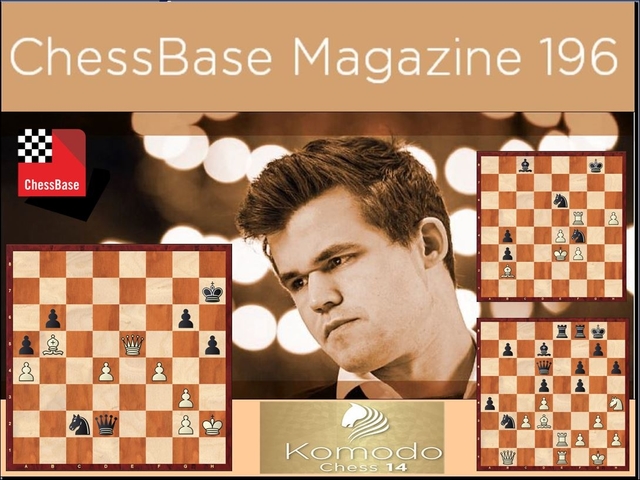ChessBase Magazine #196 – a review
It was Monday, the beginning of the week, when I found out that the latest issue of my favorite magazine had just been released. But in a few hours I would have to go to work! I work as a nurse again because the Corona Virus emergency has created a lot of openings in the nurses’ market. Before I was teaching chess to kids in schools, but now the schools are closed and the future for chess teachers looks bleak.
But before beginning a new day, helping elderly patients, I couldn’t resist to peruse this new issue of ChessBase Magazine 196. This is what I found.
The first surprise came with the section: "My favourite Fischer game". ChessBase had asked their authors to annotate one of their favorite games played by Bobby Fischer which led to 17 deeply annotated Fischer-games. I’d like to give an example of such an annotated game. Fischer was 17 when the game was played and he won in 23 moves.
No other World Champion was more infamous both inside and outside the chess world than Bobby Fischer. On this DVD, a team of experts shows you the winning techniques and strategies employed by the 11th World Champion.
Grandmaster Dorian Rogozenco delves into Fischer’s openings, and retraces the development of his repertoire. What variations did Fischer play, and what sources did he use to arm himself against the best Soviet players? Mihail Marin explains Fischer’s particular style and his special strategic talent in annotated games against Spassky, Taimanov and other greats. Karsten Müller is not just a leading international endgame expert, but also a true Fischer connoisseur.
The game was chosen and annotated by Petra Papp, a WGM from Hungary.
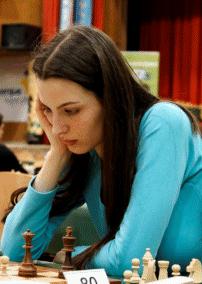
I believe, it’s important to know as many players as possible. When I read the name of an annotator, I also try to look at some of her/his games. It’s a question of forma mentis: players who really want to progress and improve need to watch as many games as possible, and be exposed to different chess ideas. In the ChessBase playerbase I read that the following game was one of Petra Papp's strongest wins: Maksim Vavulin (2554) 0-1 Petra Papp (2338)
Watching the game I understood why Karpov, when asked if chess computers would end chess, answered: "No, because I play against humans…"
I admit, I’m interested in chess history. Throughout chess history, great players have played secret matches to prepare for important tournaments or matches. Botvinnik comes to mind, who would play with smoke and loud noise to improve his concentration. Recently, the Elk and Ruby publishing house has uncovered some games played in secret matches by Kasparov.
A 41-minute video by GM Rogozenco deals with fragments of the secret games from the book.
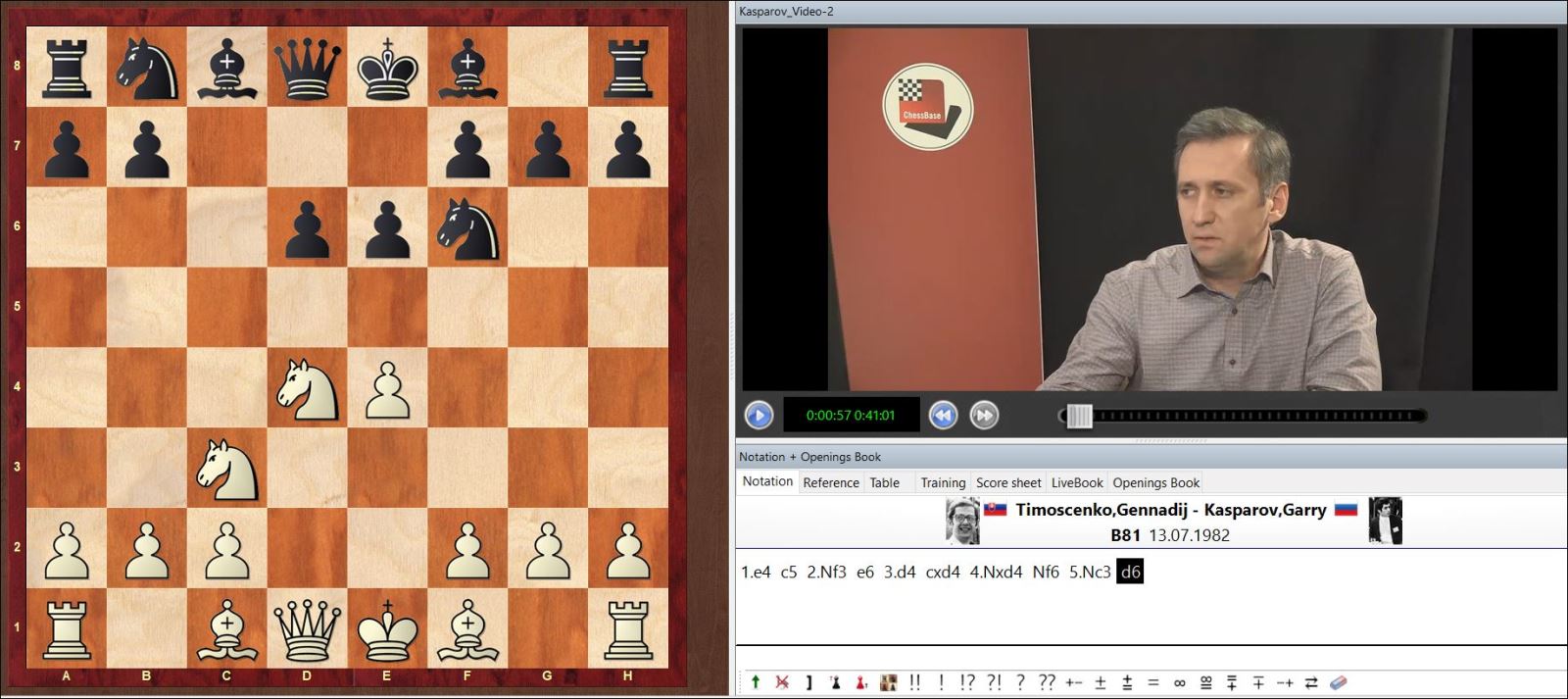
Rogozenco has also another video in this issue of the ChessBase Magazine, in the column: "Coaching by Experts". His video treats the game Botvinnik vs Vidmar 1936. The video is just 11 minutes, and this can be quite useful for keeping our chess minds entertained when we don’t have much time, e.g. in the morning. We can enjoy such a video, and then go to work!
Analyses from the Magnus Carlsen Invitational and FIDE Nations Cup by Giri, Duda, Firouzja, Adhiban and others. CBM Special: Boobby Fischer! 11 articles with new repertoire ideas. Videos by Werle, King and Marin. Training: tactics, strategy and endgame!
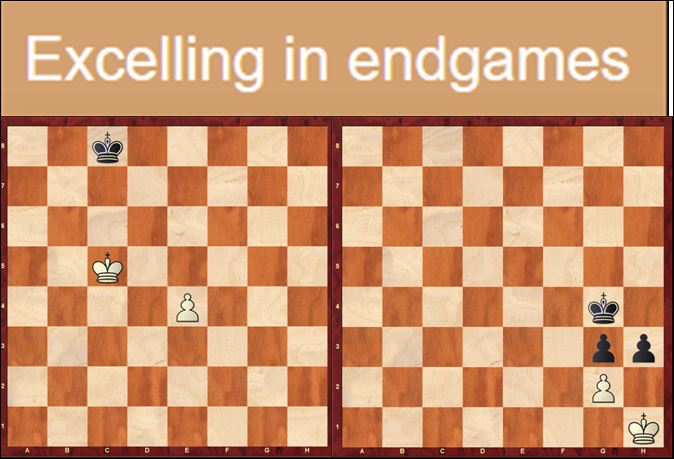
The column I enjoy most is generally GM Karsten Müller's "Excelling in Endgames", because endgames are crucial for one’s chess improvement. This issue of CBM begins with a section about pawn endgames.
Now, I don’t want to downplay the difficulty of pawn endgames. I’m not an engine, and over the years I’ve made my share of mistakes in these endgames. But i think that training with the positions presented by GM Müller is fundamental for our improvement as players. Yes, if we do 1000 tactics a month we will surely improve, but we also need to learn how to win when the advantage is minimal. Endgame knowledge also helps to save a lot of games.
In this issue GM Müller presents fundamental themes every chess player on the way to master level needs to know!
As a great teacher Müller begins with something simple, something every player MUST know: the Opposition. The following position is one of Müller's examples – Black is to move and win. Try to play it against the engine:
The following is an example taken from a real game which shows the importance of the outside passed pawn.
In the game Black played 51…Kf6 and the game ended in a draw. This position teaches us the art of calculation. Take some time to find out how Black could win. Then try to play the position against an engine to see if you can win.
Now we continue with another interesting theme in pawn endgames: penetrating with the King. The following example shows the importance of zugzwang: White to move and win:
The last two themes treated by Müller are: the undermining breakthrough, and exchanging, which means to know when one should exchange pieces to reach a winning endgame. Can Black win the position below by playing 53…Qxg3?
Müller selected endgames from recent tournaments, beginning with rook endings, then passed to knight endings, bishop against knight, bishop pair, queen against pawns, queen against two rooks, rook against bishop, rook against knight etc.
There are a total of 51 positions in the "Excelling in the endgame" section, and everyone should practice these endgames to improve and to prepare for future tournaments.
Of course, without a good opening repertoire we might never reach the endgame. In the "Ideas for your repertoire" column various GMs propose interesting opening ideas.
The first opening article I checked was by GM Romain Edouard, who is famous for his books published by Thinkers Publishing. The article deals with an interesting and bold early push with the g-pawn!
1. c4 Nf6 2. Nc3 e6 3. Nf3 Bb4 4. g4
GM Edouard has annotated eight games, two of which two were played by him.
There are ten other articles about the most important openings, such as the King’s Indian Defence, the Nimzo-Indian, the Open Sicilian etc. The point is: each of these opening experts has annotated 8-10 games for each article, which gives us 80 to 90 annotated games, which can open our eyes for the handling of various pawn structures, and gives us some knowledge of the main tactics and opening ideas in each of these openings. A magazine on paper cannot give 80 annotated games. Some of this knowledge might be useful in the future, e.g. when we might want to change our opening repertoire, and that is a good reason to treasure and collect ChessBase Magazines.
Another method to improve is "Guess the Move" training. While going through a good game you try to guess the moves of one side. In the ChessBase Magazine GM Simon Williams selects a game for us and while he explains it he stops at certain points to ask how we would continue.

By the way, ChessBase 15 has a "Move by Move" feature that allows you to guess the move in every game and to get statistical feedback from the program.
The column "Practice makes perfect" contains 50 tasks, with multiple questions that test our understanding of strategy, endgame knowledge and tactics.
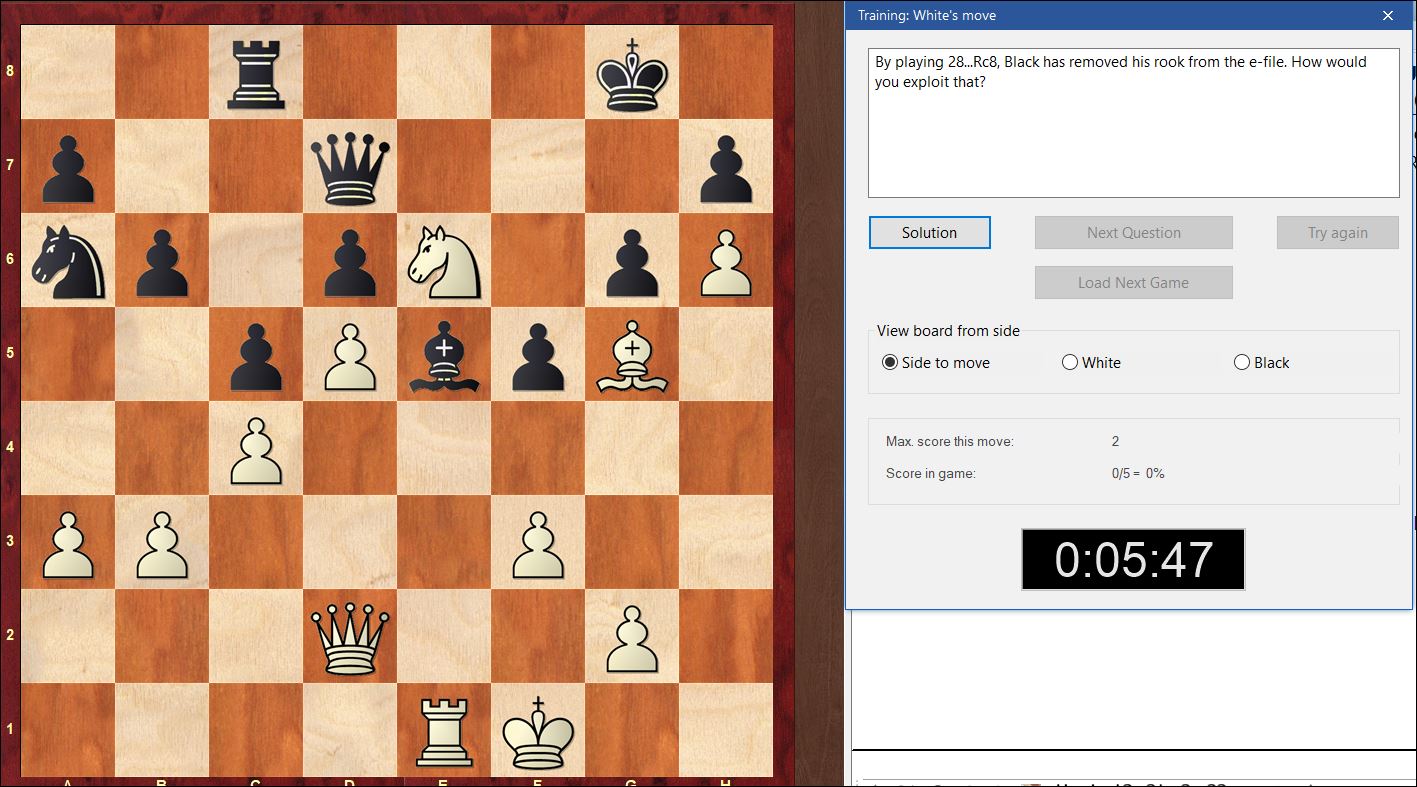
But don’t confuse this column with "Tune your tactics" in which Oliver Reeh presents a high quality selection of tactical moments, a total 196 tactics/questions in 27 games.
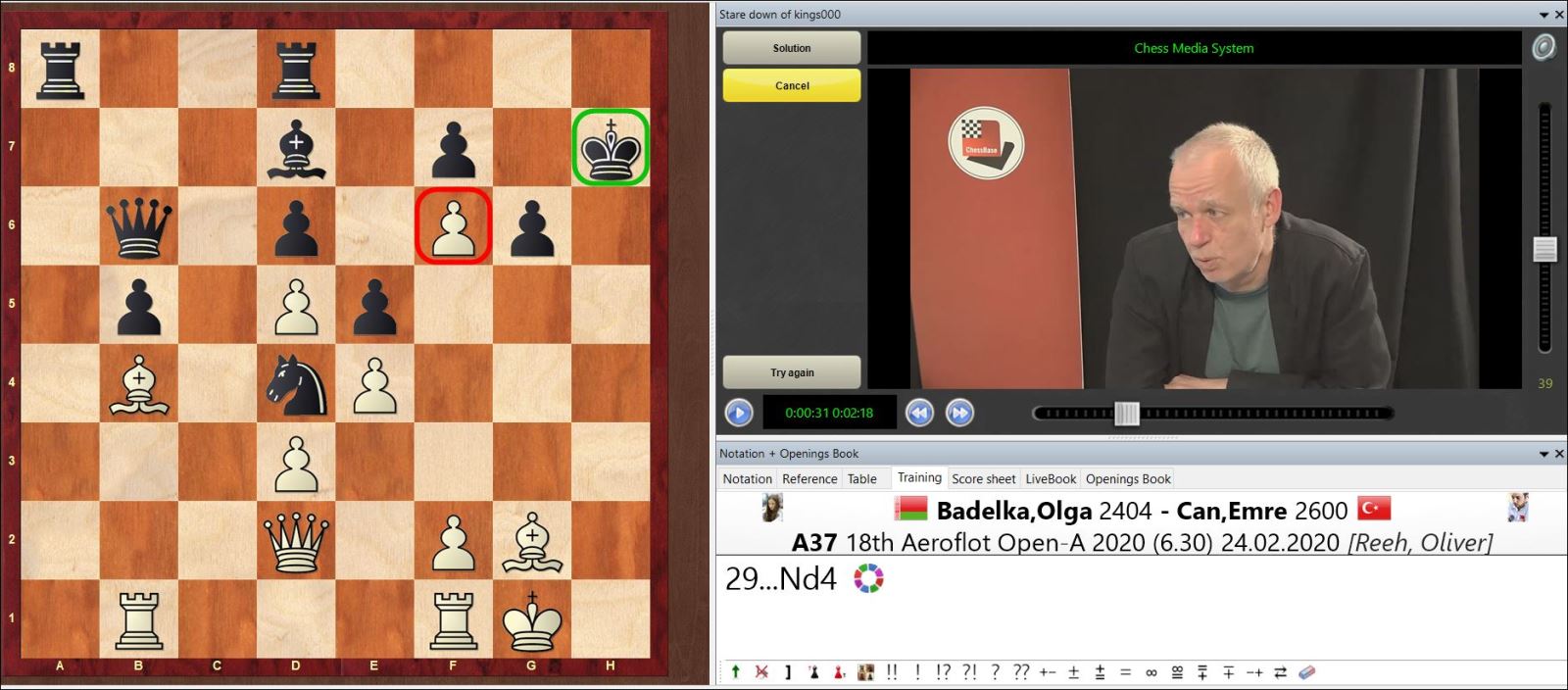
Here's a position from "Tune your tactics" which you might like to play against an engine:
Black to play and win.
"Tune your Tactics" is also interactive. Reeh mentions a possible line and asks us to evalute it. This simulates a situation from a real game in which we are not allowed to move the pieces. Our answer is followed by feedback that shows us how we might have fared in a game.
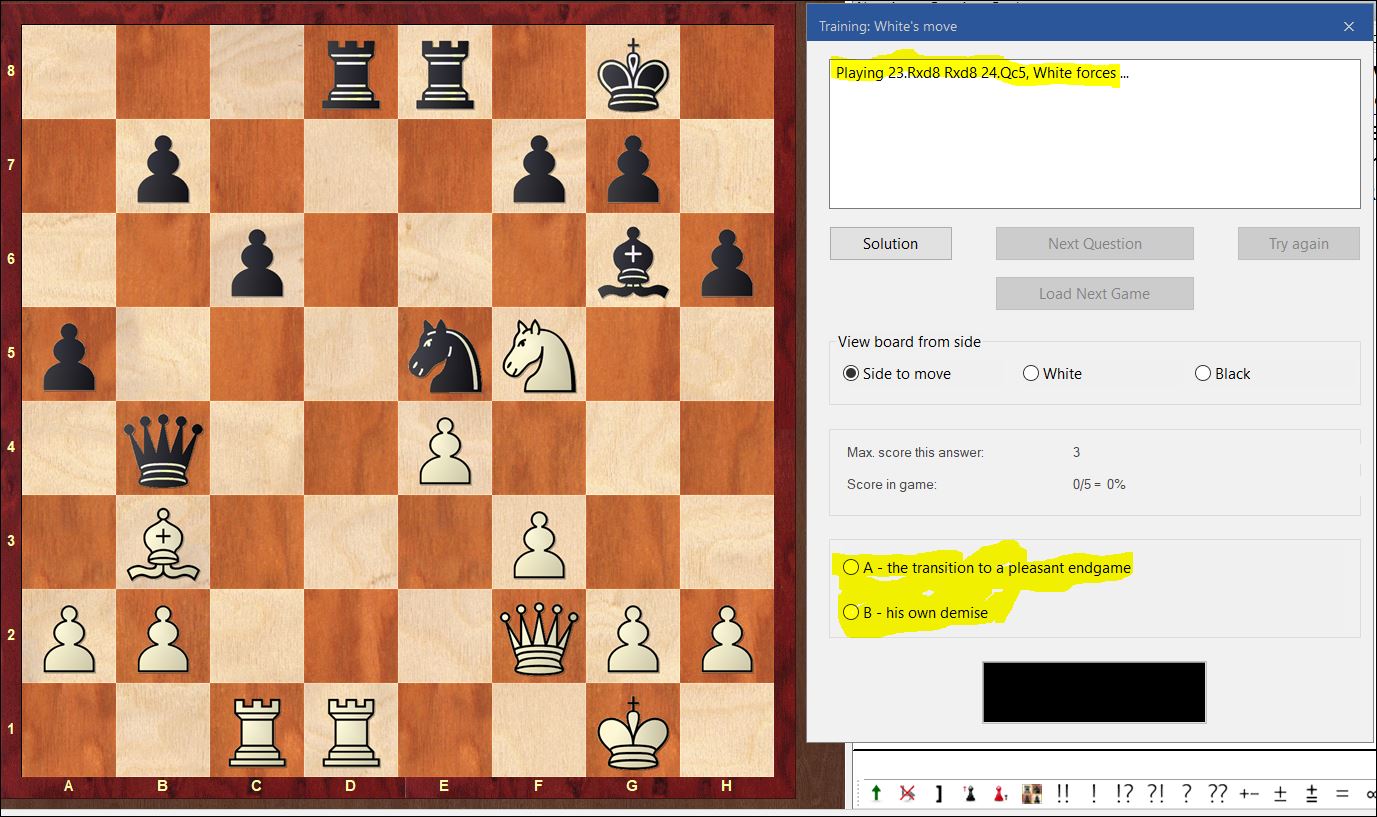
In an interactive video Reeh also presents three games and at critical moments he stops to ask the viewer to find the right continuation. I’m not tired of mentioning it, because I believe it’s true: there is no chess magazine which gives readers this amount of interactivity and material. These games will stick in your memory because they excite more than one or our senses.
This issue of Chessbase Magazine has only 667 games. Generally, each issue contains about 2000 to 3000 games played between top GMs but the coronavirus stopped all over-the-board tournaments and chess was played online, most often with shorter time-controls. But some of these games are real gems and I would like to close by showing a nice victory by Carlsen against Nakamura, annotated by GM Edouard:
Final thoughts: For me, the ChessBase magazine is like a 3000 calories meal: rich, full of high quality content, and it gives a passionate chess player many tools to improve. The amount of professional players teaching in the ChessBase magazine is unrivaled. The possibility to see and hear them is like receiving a personal lesson. The amount of drills one can play over and over is astounding, and will definitely bring our chess to the next level. One just needs to put in the time, but that is something nobody else can do for us. We will definitely reap the rewards over the board, thanks to this great tool for chess improvement.
Analyses from the Magnus Carlsen Invitational and FIDE Nations Cup by Giri, Duda, Firouzja, Adhiban and others. CBM Special: Boobby Fischer! 11 articles with new repertoire ideas. Videos by Werle, King and Marin. Training: tactics, strategy and endgame!
Order ChessBase Magazine #196 in the shop...
